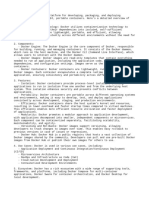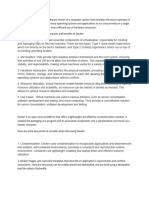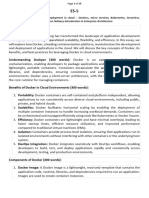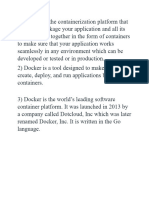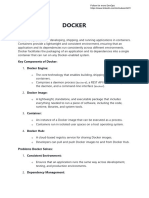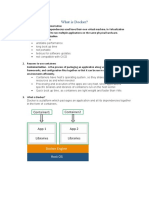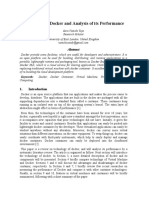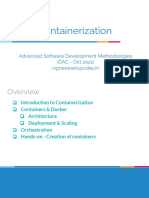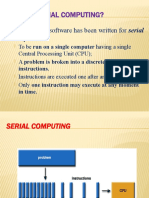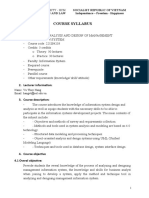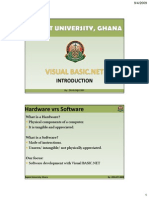Point of View on Docker
Docker is a revolutionary platform that has redefined how software is developed, packaged, and
deployed. By introducing a standardized way to containerize applications and their
dependencies, Docker has bridged the gap between developers and operations, enabling
consistency, portability, and efficiency in application delivery. It has become a cornerstone of
modern DevOps and cloud-native practices.
1. Simplified Application Packaging
Docker encapsulates an application and its dependencies into a lightweight, portable container.
This ensures that the application runs consistently across different environments—whether on a
developer’s laptop, in a staging environment, or on a production server. This "build once, run
anywhere" approach eliminates the infamous "it works on my machine" problem, streamlining
development and testing.
2. Portability and Consistency
Containers are inherently portable. A Docker image created on one system can run on any other
system that supports Docker, regardless of the underlying hardware or operating system. This
consistency empowers developers to focus on building applications without worrying about
environment-specific configurations or dependencies.
3. Resource Efficiency
Unlike virtual machines (VMs), Docker containers share the host operating system's kernel,
making them far more lightweight. This reduces overhead in terms of CPU, memory, and
storage, enabling higher density of applications on the same hardware. Docker's resource
efficiency is a key enabler for microservices architectures, where multiple small services need to
run concurrently.
4. Accelerating Development and Deployment
Docker significantly speeds up the software development lifecycle. Developers can quickly spin
up isolated environments, replicate production setups locally, and test changes without affecting
the host system. Paired with CI/CD pipelines, Docker enables faster build, test, and deployment
cycles, making it a vital tool in agile and DevOps workflows.
�5. Ecosystem and Community Support
The Docker ecosystem, including Docker Hub, provides a vast library of pre-built images for
common software stacks, enabling developers to get started quickly. The thriving community
around Docker ensures continuous innovation, extensive documentation, and best practices,
making it accessible to teams of all sizes.
6. Challenges and Limitations
While Docker is powerful, it is not without its challenges.
Learning Curve: For teams new to containerization, understanding Docker concepts like images,
containers, volumes, and networks can be daunting.
Complexity in Orchestration: Running containers at scale requires additional tools like
Kubernetes, as Docker Swarm has seen limited adoption compared to its competitors.
Security: Containers share the host OS kernel, which can pose security risks if not managed
properly.
7. Strategic Impact on IT Infrastructure
Docker is more than a tool—it’s a catalyst for modernizing IT infrastructure. It has been
instrumental in enabling microservices, DevOps practices, and cloud-native architectures. By
abstracting infrastructure complexity, Docker empowers teams to focus on innovation and
delivering value to customers.
Conclusion
Docker has fundamentally changed how software is built, shipped, and run. Its emphasis on
portability, efficiency, and consistency has made it a cornerstone of modern application
development. While it requires thoughtful adoption and management, Docker’s benefits far
outweigh its challenges. For organizations looking to embrace agility, scalability, and efficiency,
Docker is not just a technology—it’s a competitive advantage.

